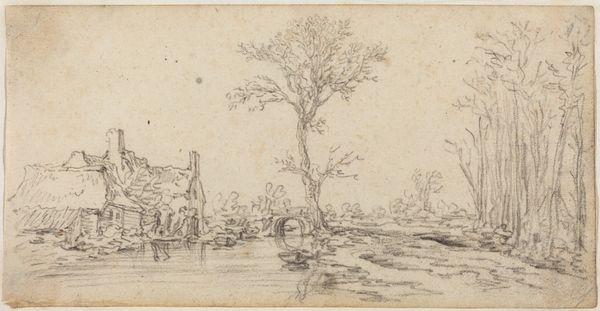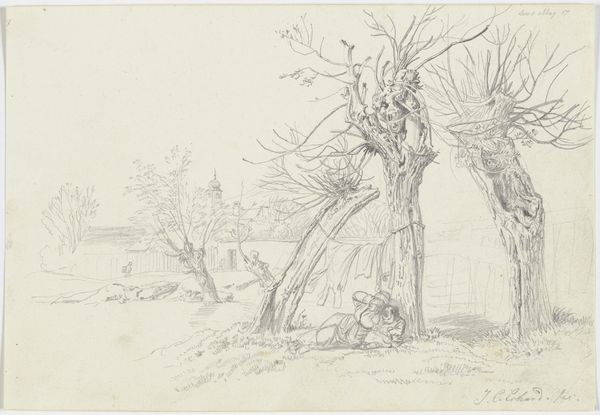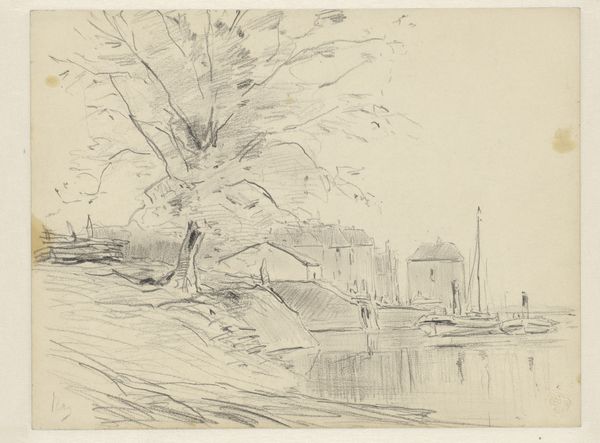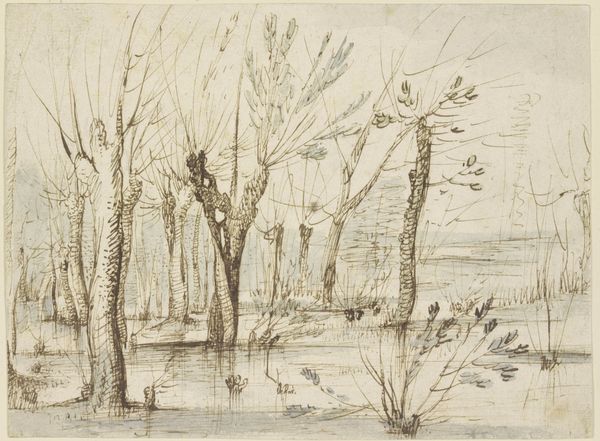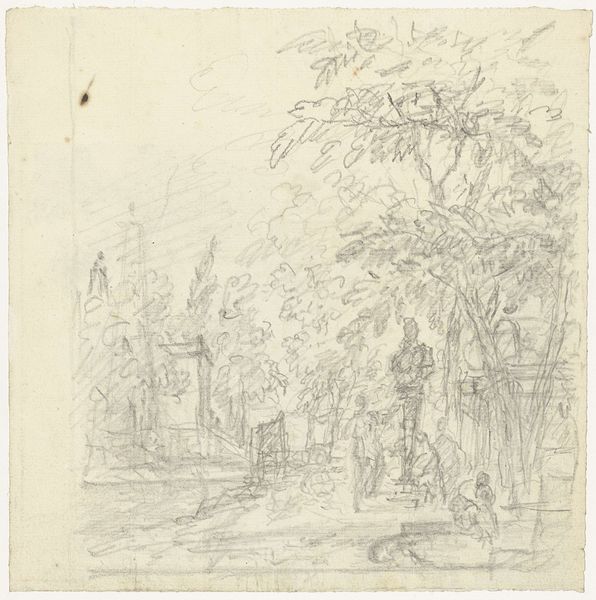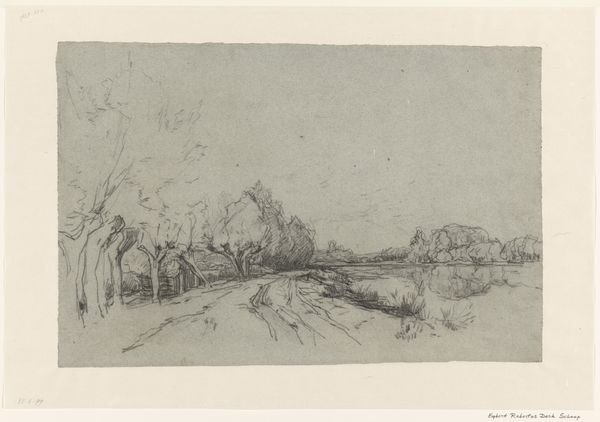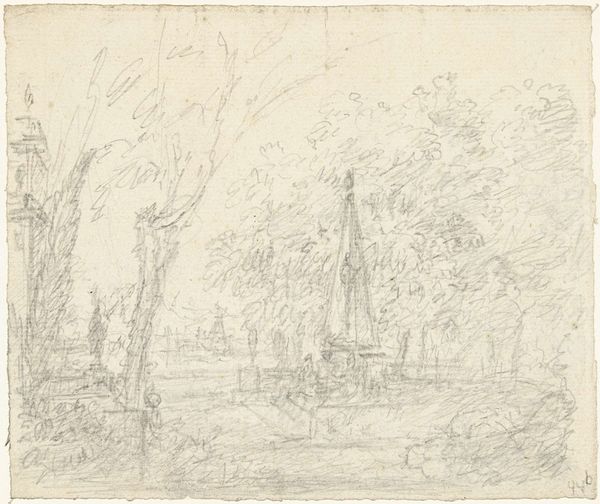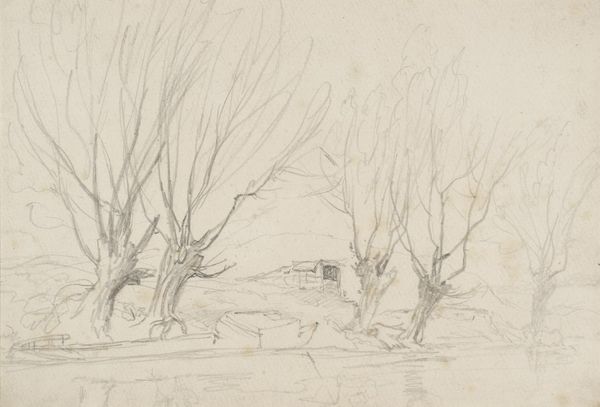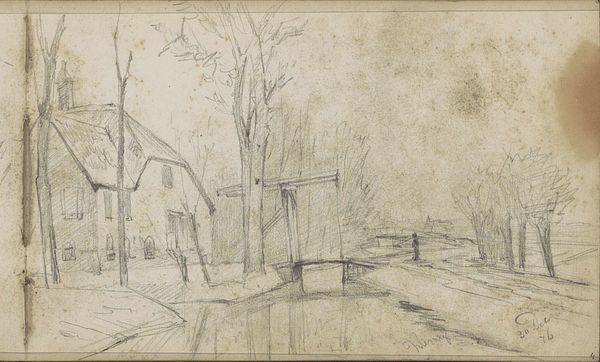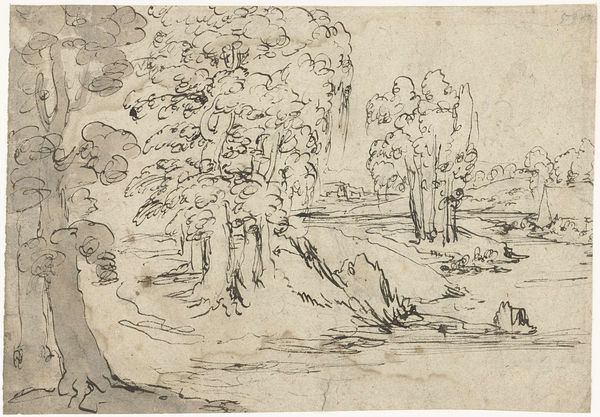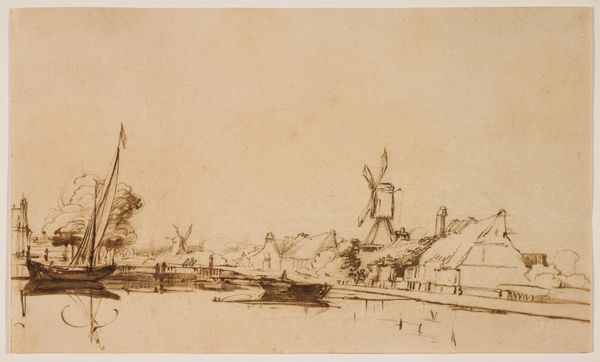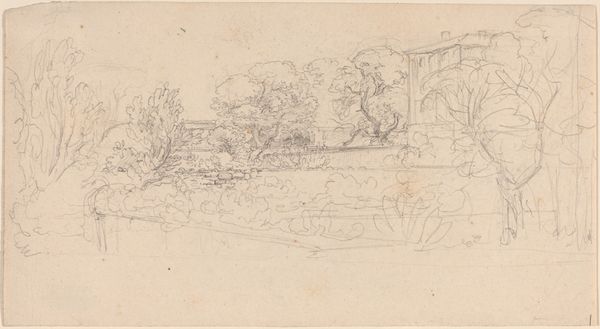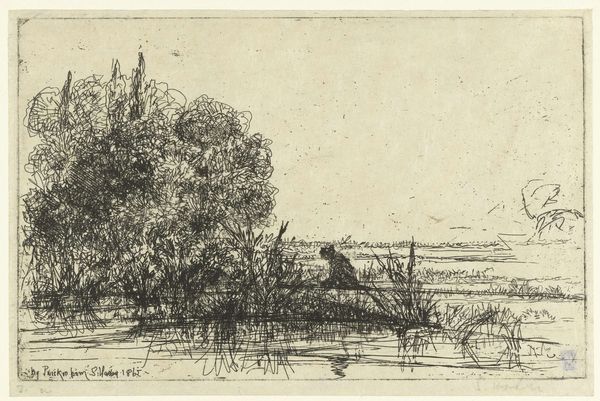
drawing, pencil
#
drawing
#
dutch-golden-age
#
landscape
#
pencil
Dimensions: overall: 11.4 x 22.2 cm (4 1/2 x 8 3/4 in.)
Copyright: National Gallery of Art: CC0 1.0
Curator: Jan van Goyen’s "Cottages by a River," likely drawn between 1627 and 1629, captures a humble scene along a Dutch waterway in pencil. Editor: It’s… austere. The pencil work creates a stark, almost skeletal composition, dominated by the angular cottages and the bare branches of the trees. It feels melancholic. Curator: The lack of color certainly contributes. But within Dutch landscape painting, and drawings like this, is an implicit social compact. The water wasn't merely a feature; it symbolized life and trade, an intrinsic piece of the Dutch identity during their Golden Age. Editor: I see that reflected in the composition. The horizontal emphasis—the long stretch of the river and the low horizon—implies a continuity. The verticals of the cottages and trees are quite interesting; I wonder if the buildings symbolize safety and home. Curator: Very astute. These riverside cottages appear consistently throughout the art and literature of this period; they were emblems of the self-sufficient family unit and national pride. They represented freedom and resourcefulness amid larger sociopolitical changes across Europe. Editor: So, despite the simplicity, the pencil is dense in symbolic weight. Even the boat in the distance could signify connection and the constant movement of culture and ideas, it completes a kind of visual triad of elements: buildings, river and people/boats. Curator: Exactly! Van Goyen, while sketching what seems like a normal landscape, conveys complex meanings—community, economic stability, the constant flow of Dutch life through its waterways. Editor: So this isn't simply a quaint waterside sketch; it’s an archive. Thank you for lending insight into the artistic layers captured here. Curator: And thank you for guiding my reading of form—showing that simplicity in structure doesn't diminish layered human context.
Comments
No comments
Be the first to comment and join the conversation on the ultimate creative platform.
